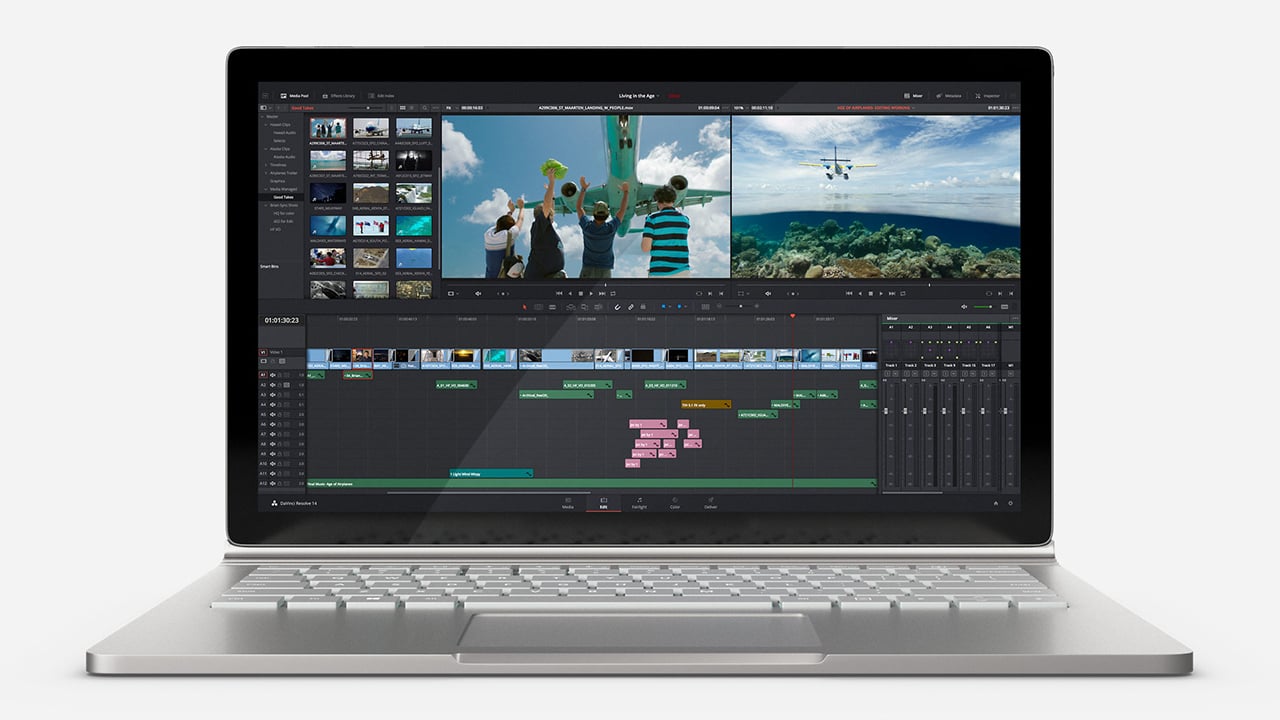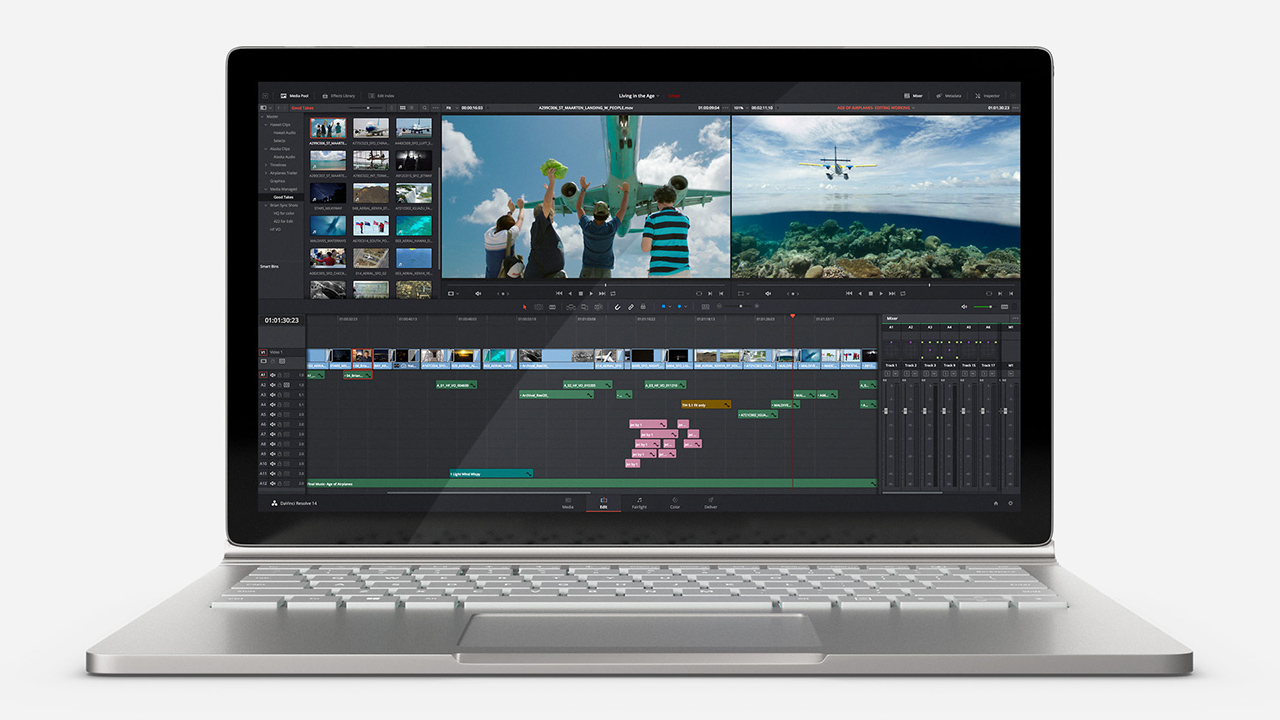
 DaVinci Resolve flying along on a MacBook Pro
DaVinci Resolve flying along on a MacBook Pro
Purchasing new equipment, especially for the resource intensive acts of something like video editing, can be fraught with pitfalls. With such a large investment, nobody wants to make the wrong choice. Can we make sure that we get the right information we need to make such decisions?
Recently, I was faced with a dilemma. With my current computer not coping very well with the latest OS's and software, I could either throw my existing ancient MacBook Pro 13 inch out of the window, and smile sweetly as it was run over by an articulated lorry, or I could buy a new one. After much arguing with my wallet I opted for the latter, and I went for a 15 inch model with a shiny new Touch Bar.
Of course, because I want to be able to do more of my video editing on the move, as well as to deal better with the day to day tasks on RedShark, wherever I may be, I decided to look into how well the various NLE software such as Resolve runs on it.
This, as was always destined to be the case, turned out to be a huge mistake to make, because what I was faced with were endless online rants about how useless the Touch Bar was, whilst somebody else, conversely, raved about how useful it is. Elsewhere one person had decided to get a 21 inch iMac instead because apparently it offered better value, and he considered it to be pretty much just as portable as a dedicated laptop. He even had a carry bag to prove it...
As I read on and my will to live started to wane, I came across many benchmarking test articles. One of them was comparing the 27 inch iMac to the MacBook Pro. Needless to say that the iMac came out on top in every test — it would be extremely surprising if it didn’t. The screen was supposedly much more colour accurate on the iMac, too. This is, of course, a misnomer, because if you are doing serious grading, you’ll be doing it in a properly set up environment using a dedicated monitor. The only thing showing on the iMac monitor should be the software interface. If you are doing rudimentary quick grading, then whether you use the iMac or MacBook Pro will be immaterial in the grand scheme of things.
Comparing like with like?
We are used to these types of apples to oranges comparisons online, but unfortunately they really do make the purchasing decision that much harder because so much of the information put forward is conflicting. I would be lying if I didn’t tell you that I started to have some buyers regret, and wondered whether I really should get a gigantic carry bag and take an iMac with me everywhere. Until that is, I slapped myself with a proverbial wet fish and regained both my composure and my sanity.
You see, if you are in the market for an editing computer, the decision focussed question that you should be asking yourself is one of glorious simplicity. Do I want less power but portability, or do I want less mobility but power in one location? You buy a laptop or equivalent for the former, and a desktop machine for the latter. There isn’t really a grey area, and no number of attempts at convincing me will persuade me that I would be much happier carrying around an iMac from location to location. Not to mention that, as far as I recall, the iMac has no independent way of being powered away from a mains supply. You'd look like a bit of a fool in Star Bucks or in the middle of the countryside let's just say.
There is one other simple fact in all of this. Although the 15 inch MacBook Pro is not as fast as its iMac stablemate, it is actually an order of magnitude faster than my current machines. The mere fact that, whether you own a Mac or a Windows machine you can edit not only 4K footage but raw footage on the go, in the middle of nowhere, is something to be celebrated. And if you believe that these machines are not powerful or useful enough to do so, you really should try editing on my old machines! You’d be thanking your lucky stars for the latest models, believe me.
Once again, numbers in benchmarking software and on paper only tell you half the story. They don’t tell you how practical the machine is for the task you are asking of it. All the computing power in the world isn’t going to help you if you need that power on location, away from a power supply, or have to regularly move it from place to place. Let's all get our apples and oranges in place in the future, shall we?
Tags: Production


Comments